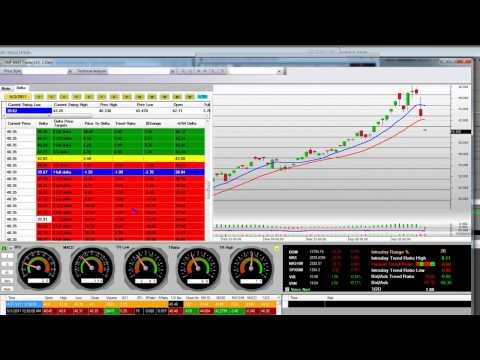Can ETFs really cause the next stock market crash
Post on: 1 Май, 2015 No Comment

Getty Images
Those exchange-traded funds that use leverage to double and triple returns on stock market moves could cause the next big market crash, according to the Federal Reserve.
A paper called Are Leveraged and Inverse ETFs the New Portfolio Insurers? from the central bank stirred markets into wondering what would happen if the funds ever went haywire.
The paper asserts that the funds could act in the same way as the portfolio insurance that helped crash the market in 1987.
Although (leveraged ETFs) are not as large as portfolio insurers of the 1980s and have not been proven to disrupt stock market activity, their large and concentrated trading could be destabilizing during periods of high volatility, study author Tugkan Tuzun wrote.
At the heart of the problem is the way the leveraged ETFs work.
They provide both bullish and bearish investors with two and three times the market’s respective gain or loss during a session, then rebalance at the end of each trading day.
That is counter to the operation of typical ETFs, which typically track various indexes and are bought and sold just like stocks.
It is the rebalancing process at the end of the day that is causing consternation.
That involves the fund’s administrator changing the composition of the index to reflect the proper leverage exposure, so that the fund would deliver a 2 percent gain on a 1 percent rise in the index and vice versa on a loss.
Tuzun explained:
The implied price impact estimates of LETFs on broad stock-market indexes become significant during periods of high volatility, especially for the stocks of financial firms. LETF rebalancing in response to a large market move could amplify the move and force them to further rebalance which may trigger a cascade reaction. Rebalancing in the last hour of trading could, in fact, reduce the possibility of a price dislocation since the market close could serve as a prolonged circuit breaker. On the other hand, executing orders within a short period of time, such as the last hour of trading, may cause disproportionate price changes. A significant price reduction at market close may also impair investor confidence. If the market closes with depressed prices, the stock market could experience large investor outflows overnight.
While it sounds like a fairly scary prospect, not everyone is as alarmed.
Industry advocate ETFguide found the paper ludicrous.
How can the Fed have the audacity to lecture anybody about the danger of leverage when it itself is overleveraged? editor Ron DeLegge asked in a rejoinder titled 35 questions for the Fed about leveraged and short ETFs .
And Nicholas Colas, chief market strategist at ConvergEx, said he found the Fed concern in a strange way. fairly comforting.
Recall that the financial crisis saw some pretty extraordinary regulatory moves, such as short-sale bans of select stocks, in attempts to calm markets during their darkest days, Colas said in a note to clients.
If the Federal Reserve is calling out the leveraged and inverse ETF products as exacerbating market moves to the downside, it would seem pretty clear that curtailing the use of these products in extraordinary times is something they would recommend should the time come. All’s fair in love and war, I suppose.
Current low levels of volatility—the CBOE Volatility Index remains mired in the mid-teens despite the market’s recent turbulence—probably make concern over the leveraged products premature, he said.
The ETFs in question have taken in about $3.3 billion in funding in 2013, which pales compared with the $177 billion in new money to the $1.53 trillion space.
But it’s worth noting that the products as a group are down 44 percent in return for the year.
There is a long-standing debate in the regulatory community about how much ‘Mom and Pop’ investors really understand about leveraged and inverse ETF products, Colas said. By my reading of the money flow data, they understand it reasonably well.
These are products with a very specific purpose, and with very high penalties for inattentiveness. It’s not really ‘buyer beware’—the disclosures everywhere around these products make it clear that ‘holder beware is the real caveat. One day really means one day.
Still, he said the Fed’s warnings are at least useful caveats in a market with rising volatility and potential dislocations.
In that environment, it may well make sense to ring-fence, suspend or curtail trading in such products, he said. At the same time, we cannot help think that the Fed is fighting yesterday’s battles. A 40-handle VIX feels very far away indeed.
— By CNBC’s Jeff Cox. Follow him @JeffCoxCNBCcom on Twitter.














